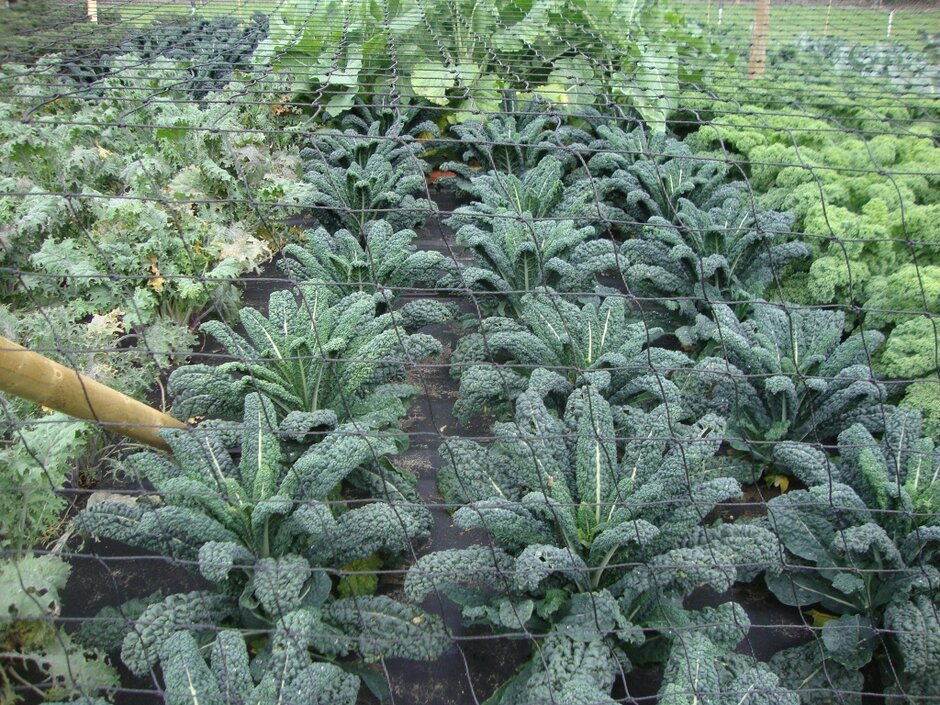Brassica oleracea (Acephala Group) 'Nero di Toscana'
borecole 'Nero di Toscana'
A robust and easy to grow variety of kale with dark green to black wrinkly leaves which provide architectural interest in the vegetable patch or even flower borders. A strong but pleasant flavour with pickings available through to March/April if sown early enough in the spring. Flowers can be left as an early source of nectar for bees
Other common names
curly kale 'Nero di Toscana'Synonyms
Brassica oleracea (Acephala Group) 'Toscana'Brassica oleracea (Acephala Group) 'Cavolo Nero'
see moreBrassica oleracea (Acephala Group) 'Black Tuscany'
Size
Ultimate height
0.5–1 metresTime to ultimate height
1 yearUltimate spread
0.5–1 metresGrowing conditions
Moisture
Well–drainedpH
Alkaline, NeutralColour & scent
| Stem | Flower | Foliage | Fruit | |
| Spring | Green | |||
|---|---|---|---|---|
| Summer | Green | |||
| Autumn | Green | |||
| Winter | Green |
Position
- Full sun
Aspect
South–facing or West–facing
Exposure
Sheltered Hardiness
H4Botanical details
- Family
- Brassicaceae
- Native to GB / Ireland
- No
- Foliage
- Deciduous
- Habit
- Bushy, Clump forming
- Genus
Brassicas can be annual, biennial or perennial plants, most are upright with alternate, often glaucous leaves, long taproots and clusters of cross-shaped, yellow or white flowers. The genus includes a number of species bred to produce food crops, such as cabbages, turnips, mustards and oilseed rape, as well as others grown for their ornamental value
- Name status
Accepted
How to grow
Cultivation
Prefers well drained, loamy, alkaline soil. Water regularly in dry periods and add plenty of organic matter before planting. Harvest once they reach the size you want and formed a firm head. See kale cultivation for further advice
Propagation
Propagate by seed. See sowing vegetable seeds
Suggested planting locations and garden types
- City and courtyard gardens
- Cottage and informal garden
- Patio and container plants
- Architectural
- Flower borders and beds
- Wall side borders
Pruning
No pruning required
Pests
May be susceptible to cabbage caterpillars, cabbage whitefly, aphids, flea beetles and slugs and snails
Diseases
May be susceptible to black rot, downy mildew, foot and root rot, grey mould, leaf spot and white blister
Get involved
The Royal Horticultural Society is the UK’s leading gardening charity. We aim to enrich everyone’s life through plants, and make the UK a greener and more beautiful place.
